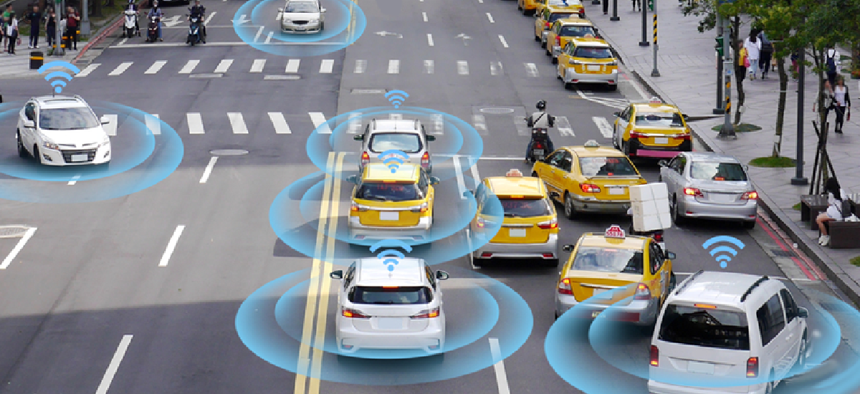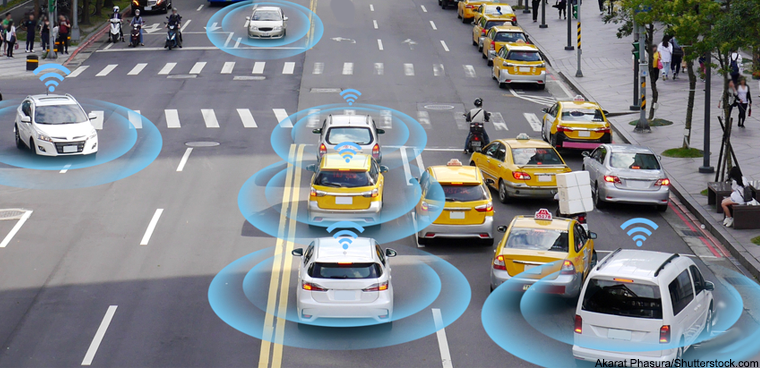Government at work -- curbing curbside congestion

Steve Kelman looks at another area where civil servants are quietly working to make our lives better.

A while ago The Wall Street Journal ran a piece on the problem of curbside congestion and efforts by cities to ameliorate the problem. The article caught my eye because curbside congestion -- lack of space for vehicles, particularly delivery and waiting ride-sharing vehicles to stop, which then translates into an epidemic of double parking -- is something that I would have thought of as merely a bad condition to endure rather than something that government might do something about. So I spoke with Scott Calvert, author of the article, and he put me in touch with two government officials who actually work on curbside congestion, so I could talk with them about what they do.
One was Kate Fillin-Yeh, a Kennedy School master’s graduate who is a staffer for the National Association of City Transportation Officials, and the other was Chris Osgood, a Harvard Business School grad who had worked for former Boston Mayor Thomas Menino on management improvements in the city and is now runs the streets department in Boston.
It turns out that curbside congestion is getting worse because of the e-commerce-driven explosion in the last decade of local deliveries by package delivery companies, and the increased number of ride-sharing vehicles seeking to pick people up.
There are a bunch of traditional approaches to reducing demand for curbside spaces and hence congestion. These involve increasing the prices charged for on-street parking, limiting the amount of time a vehicle may be parked, and increasing fines for parking violations. Studies of such changes show a clear impact on the number of parked vehicles. Studies of space use also show, not surprisingly, that cars parked on streets near popular stores often can do their business pretty quickly and don’t need to be parked as long, prompting the idea that in these areas the maximum time a vehicle may be parked should be decreased.
There are also a number of innovative “curbside management” approaches that have been tried in Europe and piloted in a few jurisdictions in the U.S. These include using small “e-cargo bikes” for deliveries rather than trucks, an app that allows trucks to locate open parking spaces, shifting some deliveries to night time, and consolidating packages so a single delivery firm can make deliveries for several companies.
What some cities are doing about curbside congestion is another example of something I have blogged about twice in the past year -- what I have dubbed “bureaucracies as learning organizations” -- in posts discussing how runway managers at airports can reduce airplane-threatening bird incursions and how highway engineers developed various techniques to reduce head-on collisions.
Thinking about this general phenomenon in the context of curbside congestion, I asked both Fillin-Yeh and Osgood how they came to think of this phenomenon as something government might do something about rather than simply a woe to be lived with. It turned out that for each of them, asking what possible solutions might be was simply part of their job. Coming up with ideas for improvements is what they do! That is an essential element of bureaucracies as learning organizations. I saw that for the California highway engineers in the 1950s and for the airport officials seeking ways to deal with bird collisions on runways. I see it here as well.
And there are other common features of. these three cases. The problems are low-visibility. The changes are incremental. And the organizational style is very systematic and deliberate. Officials try out different suggestions through pilots until they find one or more that work, rather than rolling out ideas immediately. They gather evidence of whether an intervention is successful or not.
Although piloting and evaluating pilots was part of what I saw in the two earlier examples I wrote about, this feature of bureaucracies as learning organizations was especially prominent in the discussions I had on curbside congestion. Both my sources fluently discussed examples of actual formal evaluations of pilots -- whether they be for increased parking violation fines or consolidating deliveries -- on congestion. Dedicated bike lanes started as a pilot in one jurisdiction, and when studies showed bike lanes noticeably reduced congestion and traffic fatalities, the innovation spread. Both my sources noted that the proliferation of data about city traffic in recent years, which is also now available much sooner, has aided gathering evidence about which innovations work.
There’s a lot of talking these days about “evidence-based government.” But getting evidence to play a major role in more high visibility and contentious policy areas is a challenge. People often ignore evidence that contradicts their views. However, note how in the world of bureaucracies as learning organizations, evidence is central to the bureaucratic style.
There was one difference between curbside pollution and the other two examples I wrote about earlier. In the highway and airport runway examples I wrote about earlier, the work I described was being done inside one organization. As my sources both spontaneously noted, an important part of curbside congestion work involves different organizations in the same policy space talking with each other, sharing ideas and experiences. This is more like the CIO Council than an agency working by itself. But such situations where people talk with colleagues in other organizations working in the same area are an important part of how everyday changes happen in the government and thus definitely part of the world of bureaucracies as learning organizations.
I can’t help but thinking that, in the highway and airport runway examples, and here with curbside congestion, there is a lot of low-visibility improvement and change going on that few in the public appreciate at all. My conversations with Fillin-Yeh and Osgood left me with a good feeling. How often, in areas where few of us think about government and just assume we must bear our problems, there are civil servants quietly working away to make our lives better.
NEXT STORY: Quick Hits


